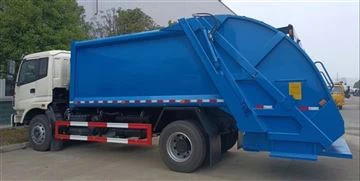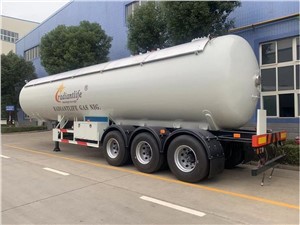Ford F550 Parts: A Comprehensive Guide for Owners and Enthusiasts

Introduction to Ford F550 Parts
The Ford F550 is a powerful and versatile vehicle that serves a wide range of purposes, from commercial use to personal transportation. As a super duty truck, it is essential to understand its parts, maintenance requirements, and replacement options to ensure optimal performance. This article delves into everything you need to know about Ford F550 parts, covering components, purchasing tips, maintenance advice, and more. Whether you’re a seasoned mechanic or a new F550 owner, this guide will equip you with valuable insights.
Understanding the Ford F550
Overview of the Ford F550
The Ford F550 is part of the F-Series, which is renowned for its strength and reliability. Designed primarily for heavy-duty applications, the F550 can handle greater loads compared to lighter models. Knowing about the F550’s specifications and capabilities will better inform your decisions surrounding its parts and service.
Common Uses for the F550
The Ford F550 is commonly used in various industries, including:
- Construction: Ideal for hauling equipment and materials.
- Towing: Frequently used for towing trailers and heavy loads.
- Utility Services: Fits well for plumbing, electrical, and telecommunication services.
- Cargo Transport: Provides ample space for transporting goods and equipment.
Key Parts of the Ford F550
Engine Components
The heart of the F550 is its engine, available in diesel and gasoline options. Understanding the main engine parts is critical for maintenance and repairs.
- Engine Block: The core part of the engine where the cylinders are located.
- Pistons: Responsible for converting fuel into motion.
- Timing Belt/Chain: Ensures the engine’s components work in harmony.
Transmission Parts
The transmission is vital for power transfer. Major components include:
- Automatic Transmission: Provides seamless gear changes.
- Transmission Filter: Keeps the transmission fluid clean.
- Torque Converter: Connects the engine to the transmission.
Suspension and Steering Components
A good suspension system ensures a smooth ride and proper handling. Key parts include:
- Shocks and Struts: Absorb road bumps and impacts.
- Control Arm: Connects the wheel hub to the chassis.
- Steering Gear: Converts the driver’s input into wheel movement.
Where to Buy Ford F550 Parts

Authorized Dealers vs. Aftermarket Parts
When looking for F550 parts, you can choose between authorized dealers and aftermarket suppliers. Each has its pros and cons, which we will explore below:
| Criteria | Authorized Dealers | Aftermarket Parts |
|---|---|---|
| Price | Generally higher | Usually more affordable |
| Quality | Original Equipment Manufacturer (OEM) parts | Varies widely, some high-quality, some inferior |
| Warranty | Typically offers warranties | May or may not offer warranties |
| Availability | May have longer wait times | Often readily available |
Online Marketplaces
Websites like eBay, Amazon, and RockAuto can offer a range of Ford F550 parts. Always check seller ratings and reviews to gauge reliability.
Local Auto Parts Stores
Many auto parts stores carry parts for the F550. They can also assist in ordering specific components if not readily available in stock.
Maintaining Your Ford F550
Regular Maintenance Tips
staying on top of regular maintenance can prolong the life of your Ford F550. Here are essential maintenance tips:

- Oil Changes: Change the oil as per the manufacturer’s guidelines.
- Brake Inspection: Regularly check brake pads and rotors for wear.
- Tire Rotation: Rotate tires every 5,000 miles to ensure even wear.
- Fluid Levels: Routinely check coolant, transmission fluid, and brake fluid levels.
Identifying When Parts Need Replacement
Knowing when to replace parts can save you money in the long run. Look for the following signs:
- Unusual Noises: Grinding or squealing noises can indicate a problem.
- Warning Lights: Dashboard warning lights should not be ignored.
- Tire Wear: Uneven tire wear may suggest suspension problems.
Upgrading Ford F550 Parts
Performance Parts Upgrades
Upgrading certain parts can significantly enhance your F550’s performance:
- Cold Air Intakes: Improve airflow and engine efficiency.
- Performance Chips: Tune engine settings for more power.
- Exhaust Systems: Enhance exhaust flow for better performance.
Visual and Comfort Upgrades
There are also several options for improving aesthetic and comfort features:
- Custom Grilles: Enhance the visual appeal of your F550.
- Upholstery Kits: Upgrade your interior for better comfort.
- Lighting Kits: Improve visibility with upgraded headlights and light bars.
DIY Repair vs. Professional Help

When to Go DIY
Taking on repairs yourself can save money, especially for minor tasks like:
- Changing oil and filters
- Replacing wiper blades
- Switching out headlights
When to Seek Professional Help
Some repairs are best left to professionals, including:
- Engine rebuilds
- Transmission repairs
- Complex electrical issues
Common Frequently Asked Questions (FAQs)
1. How do I know if I need to replace a part on my Ford F550?
Look for warnings from the vehicle’s dashboard, unusual noises, or performance issues. Regular maintenance checks can help identify potential problems early.
2. Are aftermarket parts as good as OEM parts?
Aftermarket parts can vary in quality. While some are excellent, others may not meet the same standards as OEM parts. Research and reviews are essential when choosing aftermarket options.
3. What are the signs of an engine problem?
Common signs include overheating, poor acceleration, check engine light, or unusual noises. If you encounter these issues, it’s best to have a mechanic evaluate your engine.
4. Can I upgrade my Ford F550 for better fuel efficiency?
Yes, upgrades such as cold air intakes, performance chips, and muffler replacements can improve fuel efficiency. Regular maintenance also plays a significant role in how efficiently your vehicle runs.
5. How often should I perform maintenance on my Ford F550?
Follow the manufacturer’s recommendations found in the owner’s manual. Generally, oil changes should be every 5,000 to 7,500 miles, with other inspections varying based on usage.
6. Where can I find a service manual for my Ford F550?
Service manuals can usually be found at authorized Ford dealers or online platforms such as eBay and Amazon. Digital versions can also be available for download from Ford’s official website.
